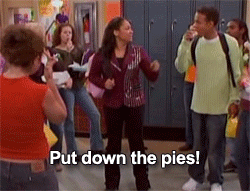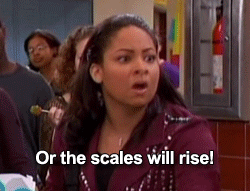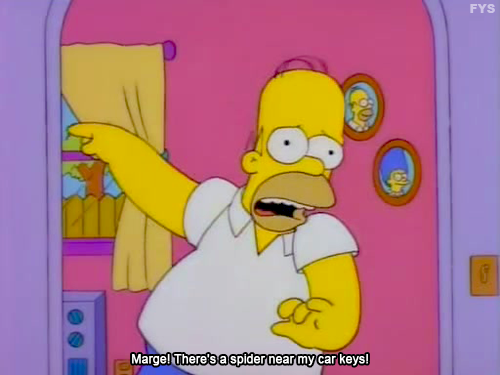258 posts
Latest Posts by smparticle2 - Page 5




From the TV series “The life of Mammals”.
(The Telegraph)
NSF’s Science360 Photo of the Week
This is a close-up view of the beam created by a vortex laser.

Because the laser beam travels in a corkscrew pattern, encoding information into different vortex twists, it’s able to carry 10 times or more the amount of information than that of conventional lasers. The optics advancement could become a central component of next-generation computers designed to handle society’s growing demand for information sharing. Image credit: Natalia Litchinitser, University at Buffalo
Like this photo? Sign up for NSF’s Science360 News Service at news.science360.gov for a daily dose of STEM radio, news, videos and more cool images like this.





winter sunrise reflections
by Denny Bitte
Woahh!!!



The Application of Sunblock in Visible and UV Light.
(lifepixel)







:)










Stress raisers!

The de Havilland DH 106 Comet in flight, the worlds first commercial jetliner. 1952-1953
via reddit
Keep reading

Self-assembling particles brighten future of LED lighting
Just when lighting aficionados were in a dark place, LEDs came to the rescue. Over the past decade, LED technologies – short for light-emitting diode – have swept the lighting industry by offering features such as durability, efficiency and long life.
Now, Princeton engineering researchers have illuminated another path forward for LED technologies by refining the manufacturing of light sources made with crystalline substances known as perovskites, a more efficient and potentially lower-cost alternative to materials used in LEDs found on store shelves.
The researchers developed a technique in which nanoscale perovskite particles self-assemble to produce more efficient, stable and durable perovskite-based LEDs. The advance, reported January 16 in Nature Photonics, could speed the use of perovskite technologies in commercial applications such as lighting, lasers and television and computer screens.
“The performance of perovskites in solar cells has really taken off in recent years, and they have properties that give them a lot of promise for LEDs, but the inability to create uniform and bright nanoparticle perovskite films has limited their potential,” said Barry Rand an assistant professor of electrical engineering and the Andlinger Center for Energy and the Environment at Princeton.
Read more.
Wooahh....


Engineers build world’s lightest mechanical watch thanks to graphene
An ultralight high-performance mechanical watch made with graphene is unveiled today in Geneva at the Salon International De La Haute Horlogerie thanks to a unique collaboration.
The University of Manchester has collaborated with watchmaking brand Richard Mille and McLaren F1 to create world’s lightest mechanical chronograph by pairing leading graphene research with precision engineering.
The RM 50-03 watch was made using a unique composite incorporating graphene to manufacture a strong but lightweight new case to house the delicate watch mechanism. The graphene composite known as Graph TPT weighs less than previous similar materials used in watchmaking.
Graphene is the world’s first two-dimensional material at just one-atom thick. It was first isolated at The University of Manchester in 2004 and has the potential to revolutionise a large number of applications including, high-performance composites for the automotive and aerospace industries, as well as flexible, bendable mobile phones and tablets and next-generation energy storage.
Read more.

GUYS https://twitter.com/AltNatParkSer/status/824054953404669953 http://www.scientistsmarchonwashington.com/ THE NATIONAL PARK SERVICE IS IN OPEN REBELLION
:)



Perfect

(NDT Facebook)

14-year-old Richard Pierce, Western Union messenger, works from 7 a.m. to 6 p.m, Delaware, 1910
via reddit

Rabies Viruses Reveal Wiring in Transparent Brains
Scientists under the leadership of the University of Bonn have harnessed rabies viruses for assessing the connectivity of nerve cell transplants. Coupled with a green fluorescent protein, the viruses show where replacement cells engrafted into mouse brains have connected to the host neural network.
The research is in Nature Communications. (full open access)

Researchers discover self-assembling 2D and 3D materials
Self-assembly of matter is one of the fundamental principles of nature, directing the growth of larger ordered and functional systems from smaller building blocks. Self-assembly can be observed in all length scales from molecules to galaxies. Now, researchers at the Nanoscience Centre of the University of Jyväskylä and the HYBER Centre of Excellence of Aalto University in Finland report a novel discovery of self-assembling two- and three-dimensional materials that are formed by tiny gold nanoclusters of just a couple of nanometres in size, each having 102 gold atoms and a surface layer of 44 thiol molecules. The study, conducted with funding from the Academy of Finland and the European Research Council, has been published in Angewandte Chemie.
The atomic structure of the 102-atom gold nanocluster was first resolved by the group of Roger D Kornberg at Stanford University in 2007. Since then, several further studies of its properties have been conducted in the Jyväskylä Nanoscience Centre, where it has also been used for electron microscopy imaging of virus structures. The thiol surface of the nanocluster has a large number of acidic groups that can form directed hydrogen bonds to neighbouring nanoclusters and initiate directed self-assembly.
Read more.

Insecticides Mimic Melatonin, Creating Higher Risk of Diabetes
Synthetic chemicals commonly found in insecticides and garden products bind to the receptors that govern our biological clocks, University at Buffalo researchers have found. The research suggests that exposure to these insecticides adversely affects melatonin receptor signaling, creating a higher risk for metabolic diseases such as diabetes.
The research is in Chemical Research in Toxicology. (full access paywall)

Chances are you or somebody you know has recently become the owner of an Instant Pot, the multifunction electric pressure cooker that can produce fork-tender pot roasts in less than an hour, as well as brown meat, cook beans without soaking, and even do the job of a rice cooker or crockpot. The Instant Pot isn’t advertised on TV or in the newspapers, and yet it’s become a viral marketing success story, with owners often describing themselves as “addicts” or “cult members.” That’s the kind of word-of-mouth publicity Instant Pot founders dreamed of when they first began designing the countertop appliances.
The Instant Pot electric pressure cooker has been around since 2010, but really became the buzz during the last six months of 2016. While the company’s electric pressure cookers are sold at Wal-Mart, Target and Kohl’s, the bulk of its sales come from Amazon, driven by social media. Deep discounts on Amazon Prime Day and again on Black Friday, along with the viral online sharing of these sales, turned Instant Pot into a household name. With 215,000 units sold on Prime Day alone, the Instant Pot Duo is Amazon’s top-selling item in the U.S. market. Not bad for a company that does no TV or print advertising and only recently began the process of hiring a marketing agency.
Not Just A Crock: The Viral Word-Of-Mouth Success Of Instant Pot
Photo: Grace Hwang Lynch

Sketching out magnetism with electricity
In a proof-of-concept study published in Nature Physics, researchers drew magnetic squares in a nonmagnetic material with an electrified pen and then “read” this magnetic doodle with X-rays.
The experiment demonstrated that magnetic properties can be created and annihilated in a nonmagnetic material with precise application of an electric field – something long sought by scientists looking for a better way to store and retrieve information on hard drives and other magnetic memory devices. The research took place at the Department of Energy’s SLAC National Accelerator Laboratory and the Korea Advanced Institute of Science and Technology.
“The important thing is that it’s reversible. Changing the voltage of the applied electric field demagnetizes the material again,” said Hendrik Ohldag, a co-author on the paper and scientist at the lab’s Stanford Synchrotron Radiation Lightsource (SSRL), a DOE Office of Science User Facility.
“That means this technique could be used to design new types of memory storage devices with additional layers of information that can be turned on and off with an electric field, rather than the magnetic fields used today,” Ohldag said. “This would allow more targeted control, and would be less likely to cause unwanted effects in surrounding magnetic areas.”
Read more.
Dutch trains now all powered by wind energy

All Dutch trains have become 100% powered by electricity generated by wind energy, the national railway company NS has said, making it a world’s first.
One windmill running for an hour can power a train for 120 miles, the companies said. Dutch electricity company Eneco won a tender offered by NS two years ago and the two companies signed a 10-year deal setting January 2018 as the date by which all NS trains should run on wind energy. ‘We in fact reached our goal a year earlier than planned,” said NS spokesman Ton Boon, adding that an increase in the number of wind farms across the country and off the coast of the Netherlands had helped NS achieve its aim.
They hope to reduce the energy used per passenger by a further 35% by 2020 compared with 2005.

The winners of the Miss Perfect Posture contest at a chiropractors convention, USA, 1956
via reddit





Scientists build bacteria-powered battery on single sheet of paper
Instead of ordering batteries by the pack, we might get them by the ream in the future. Researchers at Binghamton University, State University of New York have created a bacteria-powered battery on a single sheet of paper that can power disposable electronics. The manufacturing technique reduces fabrication time and cost, and the design could revolutionize the use of bio-batteries as a power source in remote, dangerous and resource-limited areas.
“Papertronics have recently emerged as a simple and low-cost way to power disposable point-of-care diagnostic sensors,” said Assistant Professor Seokheun “Sean” Choi, who is in the Electrical and Computer Engineering Department within the Thomas J. Watson School of Engineering and Applied Science. He is also the director of the Bioelectronics and Microsystems Lab at Binghamton.
“Stand-alone and self-sustained, paper-based, point-of-care devices are essential to providing effective and life-saving treatments in resource-limited settings,” said Choi.
On one half of a piece of chromatography paper, Choi and PhD candidate Yang Gao, who is a co-author of the paper, placed a ribbon of silver nitrate underneath a thin layer of wax to create a cathode. The pair then made a reservoir out of a conductive polymer on the other half of the paper, which acted as the anode. Once properly folded and a few drops of bacteria-filled liquid are added, the microbes’ cellular respiration powers the battery.
Read more.




Snowflakes from William Scoresby’s des Jüngern Tagebuch einer reise auf den Wallfischfang, (Hamburg: F. Perthes, 1825), the German translation of Journal of a voyage to the northern whale-fishery.
Scoresby was an Arctic explorer with interests in meteorology and navigation, who led an Arctic exploration in the early 1800s to the area around Greenland.

Untitled
by: Jannik Obenhoff
OSKI

Pop-Outs: How the Brain Extracts Meaning From Noise
UC Berkeley neuroscientists have now observed this re-tuning in action by recording directly from the surface of a person’s brain as the words of a previously unintelligible sentence suddenly pop out after the subject is told the meaning of the garbled speech. The re-tuning takes place within a second or less, they found.
The research is in Nature Communications. (full open access)
Finding Your Way Around in an Uncertain World
Suppose you woke up in your bedroom with the lights off and wanted to get out. While heading toward the door with your arms out, you would predict the distance to the door based on your memory of your bedroom and the steps you have already made. If you touch a wall or furniture, you would refine the prediction. This is an example of how important it is to supplement limited sensory input with your own actions to grasp the situation. How the brain comprehends such a complex cognitive function is an important topic of neuroscience.
Dealing with limited sensory input is also a ubiquitous issue in engineering. A car navigation system, for example, can predict the current position of the car based on the rotation of the wheels even when a GPS signal is missing or distorted in a tunnel or under skyscrapers. As soon as the clean GPS signal becomes available, the navigation system refines and updates its position estimate. Such iteration of prediction and update is described by a theory called “dynamic Bayesian inference.”
In a collaboration of the Neural Computation Unit and the Optical Neuroimaging Unit at the Okinawa Institute of Science and Technology Graduate University (OIST), Dr. Akihiro Funamizu, Prof. Bernd Kuhn, and Prof. Kenji Doya analyzed the brain activity of mice approaching a target under interrupted sensory inputs. This research is supported by the MEXT Kakenhi Project on “Prediction and Decision Making” and the results were published online in Nature Neuroscience on September 19th, 2016.
The team performed surgeries in which a small hole was made in the skulls of mice and a glass cover slip was implanted onto each of their brains over the parietal cortex. Additionally, a small metal headplate was attached in order to keep the head still under a microscope. The cover slip acted as a window through which researchers could record the activities of hundreds of neurons using a calcium-sensitive fluorescent protein that was specifically expressed in neurons in the cerebral cortex. Upon excitation of a neuron, calcium flows into the cell, which causes a change in fluorescence of the protein. The team used a method called two-photon microscopy to monitor the change in fluorescence from the neurons at different depths of the cortical circuit (Figure 1).

(Figure 1: Parietal Cortex. A depiction of the location of the parietal cortex in a mouse brain can be seen on the left. On the right, neurons in the parietal cortex are imaged using two-photon microscopy)
The research team built a virtual reality system in which a mouse can be made to believe it was walking around freely, but in reality, it was fixed under a microscope. This system included an air-floated Styrofoam ball on which the mouse can walk and a sound system that can emit sounds to simulate movement towards or past a sound source (Figure 2).

(Figure 2: Acoustic Virtual Reality System. Twelve speakers are placed around the mouse. The speakers generate sound based on the movement of the mouse running on the spherical treadmill (left). When the mouse reaches the virtual sound source it will get a droplet of sugar water as a reward)
An experimental trial starts with a sound source simulating a distance from 67 to 134 cm in front of and 25 cm to the left of the mouse. As the mouse steps forward and rotates the ball, the sound is adjusted to mimic the mouse approaching the source by increasing the volume and shifting in direction. When the mouse reaches just by the side of the sound source, drops of sugar water come out from a tube in front of the mouse as a reward for reaching the goal. After the mice learn that they will be rewarded at the goal position, they increase licking the tube as they come closer to the goal position, in expectation of the sugar water.
The team then tested what happens if the sound is removed for certain simulated distances in segments of about 20 cm. Even when the sound is not given, the mice increase licking as they came closer to the goal position in anticipation of the reward (Figure 3). This means that the mice predicted the goal distance based on their own movement, just like the dynamic Bayesian filter of a car navigation system predicts a car’s location by rotation of tires in a tunnel. Many neurons changed their activities depending on the distance to the target, and interestingly, many of them maintained their activities even when the sound was turned off. Additionally, when the team injects a drug that suppresses neural activities in a region of the mice’s brains, called the parietal cortex they find that the mice did not increase licking when the sound is omitted. This suggests that the parietal cortex plays a role in predicting the goal position.

(Figure 3: Estimation of the goal distance without sound. Mice are eager to find the virtual sound source to get the sugar water reward. When the mice get closer to the goal, they increase licking in expectation of the sugar water reward. They increased licking when the sound is on but also when the sound is omitted. This result suggests that mice estimate the goal distance by taking their own movement into account)
In order to further explore what the activity of these neurons represents, the team applied a probabilistic neural decoding method. Each neuron is observed for over 150 trials of the experiment and its probability of becoming active at different distances to the goal could be identified. This method allowed the team to estimate each mouse’s distance to the goal from the recorded activities of about 50 neurons at each moment. Remarkably, the neurons in the parietal cortex predict the change in the goal distance due to the mouse’s movement even in the segments where sound feedback was omitted (Figure 4). When the sound was given, the predicted distance from the sound became more accurate. These results show that the parietal cortex predicts the distance to the goal due to the mouse’s own movements even when sensory inputs are missing and updates the prediction when sensory inputs are available, in the same form as dynamic Bayesian inference.

(Figure 4: Distance estimation in the parietal cortex utilizes dynamic Bayesian inference. Probabilistic neural decoding allows for the estimation of the goal distance from neuronal activity imaged from the parietal cortex. Neurons could predict the goal distance even during sound omissions. The prediction became more accurate when sound was given. These results suggest that the parietal cortex predicts the goal distance from movement and updates the prediction with sensory inputs, in the same way as dynamic Bayesian inference)
The hypothesis that the neural circuit of the cerebral cortex realizes dynamic Bayesian inference has been proposed before, but this is the first experimental evidence showing that a region of the cerebral cortex realizes dynamic Bayesian inference using action information. In dynamic Bayesian inference, the brain predicts the present state of the world based on past sensory inputs and motor actions. “This may be the basic form of mental simulation,” Prof. Doya says. Mental simulation is the fundamental process for action planning, decision making, thought and language. Prof. Doya’s team has also shown that a neural circuit including the parietal cortex was activated when human subjects performed mental simulation in a functional MRI scanner. The research team aims to further analyze those data to obtain the whole picture of the mechanism of mental simulation.
Understanding the neural mechanism of mental simulation gives an answer to the fundamental question of “How are thoughts formed?” It should also contribute to our understanding of the causes of psychiatric disorders caused by flawed mental simulation, such as schizophrenia, depression, and autism. Moreover, by understanding the computational mechanisms of the brain, it may become possible to design robots and programs that think like the brain does. This research contributes to the overall understanding of how the brain allows us to function.
Flowers








My Neighbor Totoro | Tonari no Totoro (1988, Japan)
Director: Hayao Miyazaki Cinematographer: Mark Henley




33,000 books line the walls in the Wine Library at the Boutique Hotel & Spa, Zurich